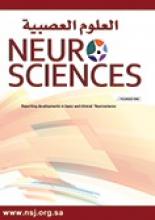Article Figures & Data
Tables
- Table 1
Summary of vitamin D interventional studies that have been carried out in multiple sclerosis patients.
Study date Study type Vitamin D dose, size, and duration of the study Clinical results Radiological results Laboratory results Mosayebi et al, 201155 RCT A total of 62 MS patients enrolled; treatment group received 300,000 IU/month vitamin D3 as IM injection for 6 months No significant difference in EDSS between the treatment and control group No significant difference in the number of gadolinium-enhancing lesions between the treatment and control group Levels of cell proliferation in the treatment group were significantly lower than in the control. The TGF-beta and INL-10 treatment groups were significantly higher than in the controls Wingerchuk et al, 200556 Open-label pilot study Fifteen MS patients received oral calcitriol (target dose: 2.5 microg/d) for 48 weeks. Dietary calcium was restricted to 800 mg/d The on-study exacerbation rate (27%) was less than baseline. Two patients withdrew because of symptomatic hypercalcemia upon discontinuation of calcitriol at 12 months. The EDSS increased to 3.1 Brain MRI revealed enhancing lesions in 5 patients at baseline (33%), and in 4 (29%) at both 24 and 48 weeks Soilu-Hänninen et al, 201257 RCT Total of 66 MS enrolled; treatment group received 20000 IU/week vitamin D3 as an add-on therapy to interferon b-1b for over one year Tendency for reduced disability accumulation (p=0.071). No significant differences in adverse events or in the annual relapse rate Significantly lower number of T1-enhancing lesions in the treatment group (p=0.004) Kimball S et al, 201158 RCT Total of 49 patients enrolled; treatment group received increasing doses of cholecalciferol (4,000-40,000 IU/d) plus calcium (1200 mg/d), followed by 10,000 IU/d over one year Abnormal T cell reactivities were suppressed in vivo by cholecalciferol at serum 25(OH)D concentrations higher than 100 nmol/L Shaygannejad et al, 201259 RCT Total of 50 patients enrolled; treatment group received escalating calcitriol doses up to 0.5 µg/day over one year In the placebo group, the mean EDSS increased from 1.70 at baseline to 1.94 at the end of the study (p<0.01). Average EDSS and RR at the end of the trial did not differ between the 2 groups. The EDSS was higher following high-dose D2 than following low-dose D2 (p=0.05). There were 4 relapses with high-dose D2 versus none with low-dose D2 (p=0.04) Stein et al, 201160 RCT A total of 23 MS patients; treatment group received high-dose vitamin D2 (6,000 IU) over 6 months. All received daily low-dose (1,000 IU) D2 to prevent deficiency No significant treatment differences were detected in the primary MRI endpoints Burton et al, 201061 RCT A total of 49 MS patients enrolled in the 52-week trial; treatment group received escalating vitamin D doses up to 40,000 IU/day over 28 weeks, followed by 10,000 IU/day (12 weeks), and further down titrated to 0 IU/day; calcium (1,200 mg/day) was given No significant adverse events occurred. Non-significant reduction in RR and EDSS in the treatment group Derakhshandi et al, 201362 RCT Thirty optic neuritis patients with serum 25(OH)D levels of less than 30 ng/ml were enrolled; the treatment group (cases) received 50,000 IU of vitamin D3 weekly for 12 months Risk reduction was 68.4% for the primary outcome (conversion of ON to MS) in the treatment group (relative risk=0.316, p=0.007) After 12 months, patients in the treatment group had a significantly lower incidence rate of new T2, new gadolinium-enhancing lesions and black holes Kampman et al, 201263 RCT A total of 68 MS patients enrolled; treatment group received 20,000 IU vitamin D(3) weekly for 96 weeks No significant difference between groups in ARR EDSS Mahon et al, 200364 RCT A total of 39 MS patients enrolled; treatment group received 1000 IU vitamin D mg, both groups received 800 mg supplemental calcium Treatment group has increased serum TGF-beta 1 Smolders et al, 201065 Single group assignment Fifteen MS patients were supplemented with 20,000 IU/d vitamin D3 for 12 weeks Skewing towards an anti-inflammatory cytokine profile Knippenberg et al, 201166 Cohort Fifteen MS patients received 20,000 IU/day of vitamin D3 over 12 weeks High doses of vitamin D(3) did not have substantial effects on phenotypic markers of B cell differentiation in circulating B cells MS - multiple sclerosis, IM intramuscular, EDSS - Expanded Disability Status Scale, RR - relapse rate, TGF - transforming growth factor, INL - interleukin, 25(OH)D - 25-hydroxyvitamin D, ON - optic neuritis, ARR - annualized relapse rat, RCT - randomized controlled trials






